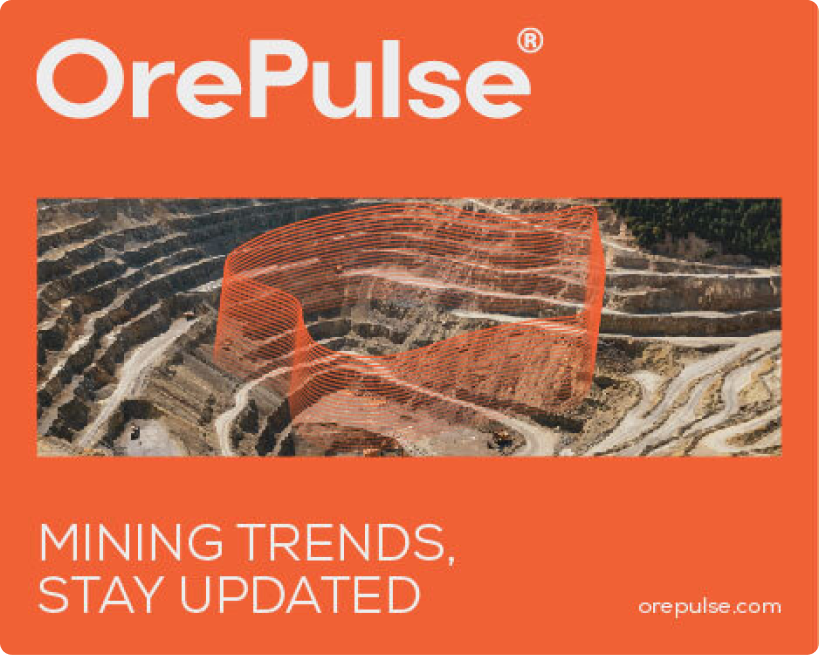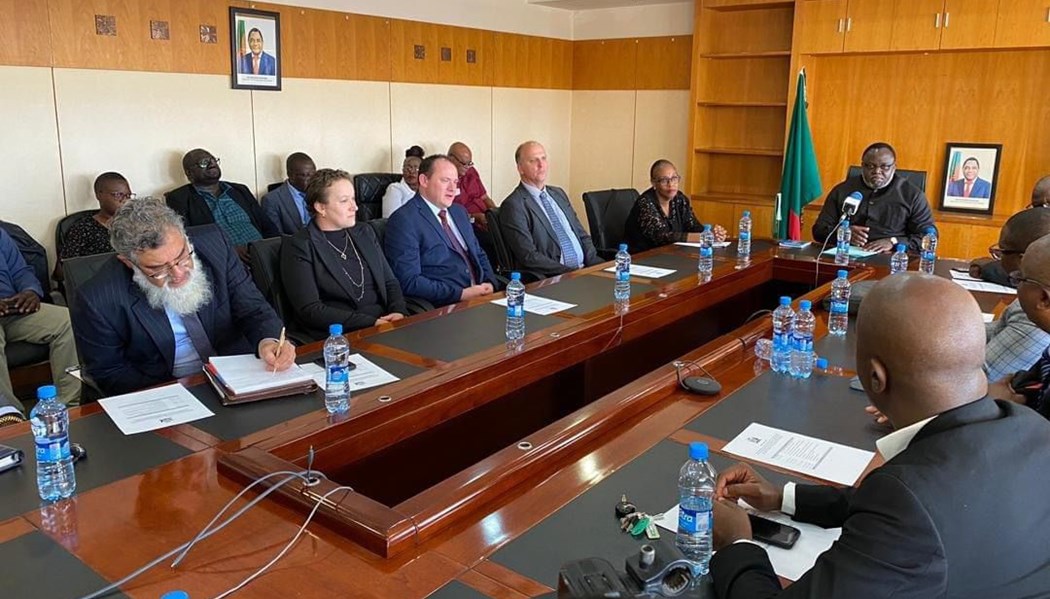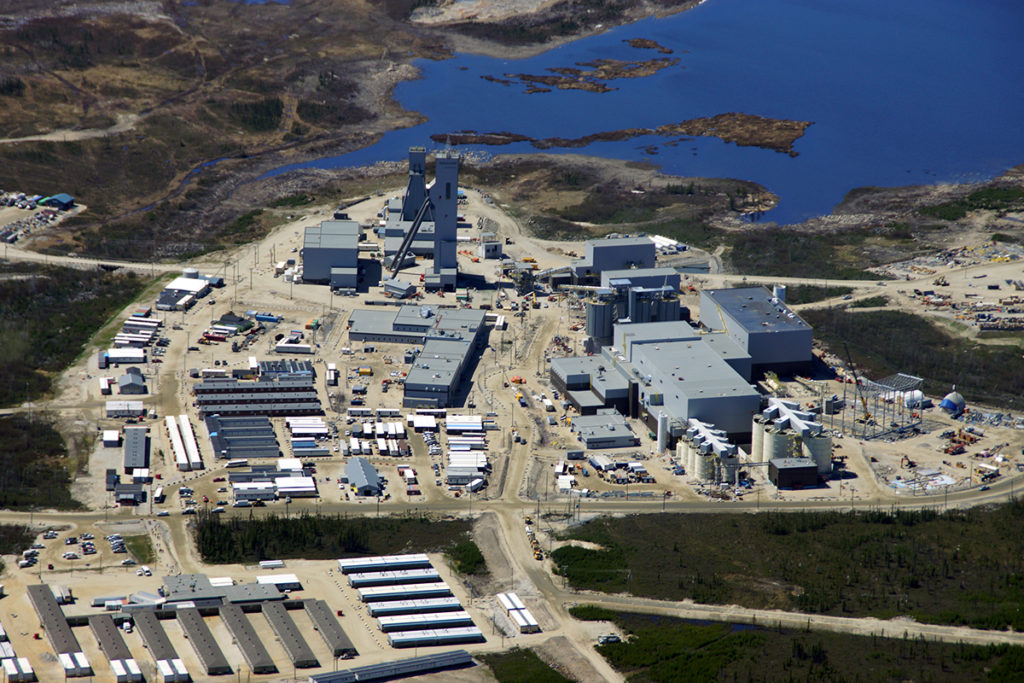Mining Other

Kon Kweni Iron-Ore Project Transforms West African Mining Landscape

Understanding West Africa's Emerging Iron-Ore Powerhouse
West Africa's mineral landscape continues evolving with the development of the Kon Kweni iron-ore project, a transformative cross-border mining initiative that demonstrates how strategic international cooperation can unlock exceptional mineral wealth. This multi-jurisdictional venture spans the Mano River Union territory, encompassing portions of Guinea, Liberia, Sierra Leone, and Côte d'Ivoire, creating unprecedented regional collaboration in resource extraction.
The project represents more than a conventional mining operation; it establishes a new paradigm for cross-border mineral development across Africa. With 752 million tonnes of iron-ore resources identified and 209 million tonnes classified as premium-grade material averaging 67.8% iron content, the Kon Kweni iron-ore project positions itself among the world's most significant undeveloped iron-ore deposits.
This exceptional ore quality eliminates most processing requirements, creating substantial competitive advantages in global steel production supply chains. The direct-shipping ore (DSO) classification provides premium market pricing while reducing operational complexity compared to lower-grade deposits requiring extensive beneficiation.
Strategic Cross-Border Positioning and Geographic Advantages
The Kon Kweni iron-ore project's strategic positioning within the Mano River Union framework creates unique logistical efficiencies by leveraging existing cross-border infrastructure rather than requiring entirely new transportation systems. This geographic advantage reduces capital requirements while utilising established maritime facilities.
Primary Infrastructure Components:
- Mining Operations Hub: Concentrated in Guinea's mineral-rich southeastern regions where premium-grade ore deposits are located
- Transportation Corridor: Direct road and rail connections through Liberia providing efficient export access to international markets
- Maritime Export Facilities: Integration with Port of Buchanan's established infrastructure eliminates need for new deepwater port development
- Rail Network Integration: Connection to existing Tokadeh-Buchanan transportation line minimises new rail construction requirements
The multi-jurisdictional approach distributes development benefits across member states whilst optimising resource extraction efficiency. This collaborative framework establishes precedents for future cross-border mining ventures throughout the region.
Furthermore, Port of Buchanan represents Liberia's primary iron-ore export facility, with existing infrastructure capable of handling substantial ore volumes. This established operational capacity reduces project-specific infrastructure development requirements while providing proven maritime export capabilities.
Project Ownership Structure and Corporate Governance
The Kon Kweni iron-ore project development operates under a balanced ownership structure combining international operational expertise with meaningful government participation and local stakeholder involvement.
| Stakeholder | Ownership Percentage | Entity | Classification |
| Société des Mines de Fer de Guinée | 85% | Ivanhoe Atlantic Inc. | Subsidiary |
| Government of Guinea | 10% | State | Interest |
| Mifergui | 5% | Local | Partnership |
This governance arrangement demonstrates contemporary African mining development practices where international expertise combines with sovereign equity participation and community involvement. In addition, Ivanhoe Atlantic's majority control ensures operational decision-making efficiency while Guinea's state interest provides regulatory alignment with national development priorities.
The 5% Mifergui partnership stake creates community stakeholder participation in project governance, though the specific organisational structure and stakeholder composition of this local entity requires verification through official project documentation.
Société des Mines de Fer de Guinée, as the primary operating entity, maintains responsibility for technical operations and project management while coordinating with government agencies and local partners across multiple jurisdictions.
Exceptional Mineral Resources and Quality Specifications
The Kon Kweni deposit contains approximately 752 million tonnes of iron-ore resources, with 209 million tonnes classified as premium-grade material. The exceptional 67.8% iron content average positions this development among the world's highest-quality undeveloped iron-ore deposits, particularly when considering current iron ore price trends in global markets.
Technical Specifications and Competitive Advantages:
- Direct-Shipping Ore Classification: Natural high iron content eliminates most beneficiation processes
- Premium Market Positioning: 67.8% Fe content significantly exceeds typical haematite ores requiring upgrading
- Processing Cost Advantages: Minimal treatment requirements reduce operational complexity and capital expenditure
- Global Supply Chain Benefits: DSO characteristics provide premium pricing while reducing buyer-side processing costs
The direct-shipping designation eliminates or significantly reduces requirements for crushing and grinding equipment, beneficiation plant infrastructure, tailings management systems, and environmental remediation for processing waste. These operational efficiencies translate directly into competitive cost structures.
Ore Quality Comparison Context:
High-grade DSO typically ranges from 65-68% Fe content, positioning Kon Kweni's 67.8% specification competitively with world-class deposits while substantially exceeding low-grade ores requiring beneficiation that typically contain 25-40% Fe.
The substantial volume of 209 million tonnes of premium material provides revenue-generating capacity across multi-decade operations, supporting sustained production economics and long-term investment viability whilst aligning with iron ore demand insights for the coming years.
Phased Development Strategy and Production Targets
The Kon Kweni project employs a strategic three-phase development approach designed to minimise risk while progressively scaling production capacity. This staged implementation allows capital distribution across multiple years rather than requiring full upfront investment.
Phase 1: Initial Production Launch (2026-2029)
Production Parameters:
- Commencement Target: Q1 2026
- Initial Capacity: 2 million tonnes annually
- Ramp-up Potential: 5 million tonnes annually
- Infrastructure Focus: Road, rail, and port development
Phase 1 establishes operational baseline with 2-5 million tonnes annual production while validating market assumptions and infrastructure performance. Construction activities concentrate on:
- Road network development linking mining sites to rail transfer points
- Rail infrastructure integration with existing Tokadeh-Buchanan line
- Port facility modifications at Buchanan for increased ore handling capacity
- Mining equipment installation and site development
- Support infrastructure including power, water, and communications systems
Phase 2: Large-Scale Expansion (2029+)
Scaled Production Objectives:
- Target Commencement: 2029
- Production Capacity: Approximately 30 million tonnes annually
- Infrastructure Requirements: Enhanced transportation systems and port terminal expansion
- Economic Impact: Significant regional development catalyst
Phase 2 expansion requires substantial infrastructure scaling including rail line capacity expansion, port terminal development for 30 million tonnes annual throughput, additional mining equipment deployment, and power infrastructure scaling. However, this expansion aligns with global trends toward the largest iron ore mines requiring substantial infrastructure investments.
Phase 3: Processing Hub Establishment
Advanced Operations Framework:
- Location: Lola processing hub
- Objective: Value-added mineral processing capabilities
- Regional Impact: Processing centre establishment for enhanced operational efficiency
The Lola processing hub represents advanced operational capacity supporting regional processing requirements beyond basic ore extraction and export functions.
Disclaimer: Production targets and development timelines represent current planning projections and may be subject to market conditions, regulatory approvals, and operational factors.
Environmental Impact Assessment and Conservation Protocols
The Kon Kweni project has completed comprehensive Environmental and Social Impact Assessments (ESIAs) for both Guinea and Liberia jurisdictions, demonstrating commitment to responsible mining practices across multiple regulatory frameworks.
ESIA Completion Status:
- Finalisation Date: October 2025
- Guinea ESIA Scope: Phase 1 mining activities
- Liberian ESIA Scope: Infrastructure component of Phase 1 development
- Phase 2 Planning: Separate ESIA processes required for expansion stages
The phased ESIA approach addresses Phase 1 environmental considerations immediately whilst maintaining assessment rigour for future expansion stages. This methodology allows operational commencement while ensuring comprehensive environmental review for scaled operations.
UNESCO World Heritage Site Proximity Considerations
The project's location near Mount Nimba UNESCO World Heritage site requires specialised environmental protection protocols addressing:
- Biodiversity Conservation: Endangered species habitat preservation including forest elephants and rare primates
- Ecosystem Connectivity: Maintenance of wildlife corridors across West African biogeographic regions
- Conservation Partnerships: Collaborative frameworks with UNESCO site management authorities
- Environmental Monitoring: Enhanced protocols for biodiversity impact assessment and mitigation
Mount Nimba's designation reflects unique biogeographic characteristics spanning Guinea, Liberia, and Côte d'Ivoire borders, requiring coordinated conservation approaches across multiple jurisdictions.
Environmental Management Framework:
- Water Resource Protection: Surface and groundwater impact analysis with aquifer protection protocols
- Air Quality Control: Dust suppression and emissions monitoring systems
- Community Impact Mitigation: Resettlement planning and livelihood restoration programs where applicable
- Baseline Documentation: Pre-mining environmental conditions establishment for impact measurement
Disclaimer: Specific ESIA findings, detailed mitigation measures, and residual impact assessments require verification through official project documentation when publicly available.
Employment Generation and Economic Development Impact
The Kon Kweni project creates substantial employment opportunities across construction and operational phases while generating sustained economic benefits for participating countries.
Construction Phase Employment Opportunities
Liberian Job Creation Metrics:
- Construction Positions: 470 jobs during infrastructure development phase
- Skills Categories: Skilled trades in engineering and construction
- Timeline: Corresponding with Phase 1 development (2026-2029)
- Economic Impact: Local supplier opportunities for materials and services
Construction employment encompasses technical roles including:
- Civil engineering positions for road and rail infrastructure development
- Construction management and supervision roles
- Equipment operation and maintenance positions
- Logistics and supply chain coordination functions
Operational Phase Employment Structure
Permanent Position Creation:
- Operations Workforce: 370 permanent jobs during mining operations
- Technical Specialisations: Mining operations, equipment maintenance, and logistics management
- Support Services: Administrative, environmental monitoring, and community relations functions
- Career Development: Training programmes for technical skill advancement and local capacity building
Operational employment provides:
- Mining equipment operation and maintenance roles
- Geological and environmental monitoring positions
- Transportation and export logistics coordination
- Administrative and management support functions
- Community relations and stakeholder engagement roles
The employment structure emphasises skills development and technology transfer, advancing local mining expertise while creating career advancement pathways for regional workers in line with contemporary mining industry evolution.
Regional Economic Benefits and Cross-Border Cooperation
The multi-phase development approach creates sustained economic impact through government revenue generation, infrastructure investment, and regional integration advancement.
Economic Development Contributions
Revenue Generation Streams:
- Government Income: Royalties and tax contributions across participating jurisdictions
- Infrastructure Investment: Transportation and port facility enhancements benefiting multiple countries
- Foreign Exchange: Iron-ore export earnings supporting balance of payments
- Supply Chain Development: Local business opportunities in materials, services, and logistics
Cross-Border Cooperation Framework
The Mano River Union operational framework provides:
- Shared Infrastructure Benefits: Reduced individual country investment requirements through collaborative development
- Regional Integration: Economic cooperation promotion across member states
- Technology Transfer: Mining expertise advancement throughout the region
- Investment Attraction: Demonstration effect encouraging additional regional mining projects
This cooperative approach establishes precedents for future cross-border resource development whilst distributing economic benefits across participating nations. Furthermore, Australia's demonstrated industry leader advantages provide valuable benchmarks for operational excellence.
Long-term Economic Impact:
- Sustained Operations: Multi-decade production timeline supporting continuous economic contribution
- Infrastructure Legacy: Transportation and port improvements benefiting diverse economic sectors
- Regional Hub Development: Potential expansion into broader mineral processing and export centre
- Skills Development: Human capital advancement in mining and related technical fields
Market Timing and Global Iron-Ore Demand Dynamics
The Kon Kweni project's development timeline aligns with favourable global iron-ore market dynamics, particularly growing demand for premium-grade direct-shipping ore.
Global Market Positioning Factors
Market Dynamics Supporting Development:
- Steel Industry Growth: Emerging market steel production expansion driving iron-ore demand
- Premium Pricing Trends: High-grade DSO commanding price premiums over lower-grade concentrates
- Supply Chain Diversification: Industrial buyers seeking new source development to reduce concentration risk
- Infrastructure Investment: Global construction and infrastructure development supporting sustained demand
The 67.8% iron content positions Kon Kweni ore competitively with established premium suppliers whilst offering supply diversification benefits for steel producers seeking reliable high-grade sources.
Regulatory and Operational Momentum
Development Progress Indicators:
- Permit Applications: Submitted to relevant authorities in October 2025
- Government Support: Demonstrated across participating nations through ownership structure
- Environmental Approvals: ESIA completion advancing through regulatory review processes
- International Frameworks: Cross-border cooperation mechanisms established through Mano River Union
This regulatory progress supports the Q1 2026 construction commencement target whilst demonstrating coordinated government support across multiple jurisdictions.
Operational Readiness Factors:
- Infrastructure Planning: Transportation and port integration strategies developed
- Workforce Development: Employment programmes designed for construction and operational phases
- Environmental Compliance: Comprehensive assessment completion supporting permit approval
- Community Engagement: Stakeholder consultation processes addressing local concerns and opportunities
Disclaimer: Market projections and demand forecasts involve inherent uncertainties and may be influenced by global economic conditions, trade policies, and technological developments in steel production.
Implementation Challenges and Risk Mitigation
While the Kon Kweni project demonstrates substantial potential, several implementation challenges require careful management across the development phases.
Regulatory Complexity Management
Managing approvals across multiple jurisdictions requires:
- Coordinated Permitting: Synchronisation of approval processes across Guinea, Liberia, and related jurisdictions
- Harmonised Standards: Environmental and operational standards alignment between different regulatory systems
- Legal Framework Integration: Cross-border operational agreements and dispute resolution mechanisms
- Stakeholder Coordination: Government alignment across participating nations regarding development priorities
Infrastructure Development Requirements
Critical Infrastructure Components:
- Transportation Network: Road and rail construction and upgrade requirements for projected ore volumes
- Port Facility Enhancement: Buchanan port capacity expansion to handle scaled production levels
- Power Supply Infrastructure: Reliable electricity provision for mining operations and processing facilities
- Communications Systems: Technology infrastructure supporting remote operations and coordination
Technical and Operational Considerations
Operational Risk Factors:
- Equipment Procurement: Mining and transportation equipment availability and maintenance support
- Workforce Development: Technical skills training and local capacity building requirements
- Environmental Compliance: Ongoing monitoring and mitigation protocol implementation
- Market Access: Export logistics optimisation and customer relationship development
These challenges require systematic risk management approaches including contingency planning, stakeholder engagement, and progressive implementation strategies.
Disclaimer: Project implementation involves inherent risks including regulatory delays, infrastructure development challenges, market condition changes, and operational factors that may impact development timelines and outcomes.
Regional Mining Context and Competitive Positioning
The Kon Kweni project operates within West Africa's expanding iron-ore sector, which includes several major developments across the region. However, the project's cross-border approach and exceptional ore quality create distinctive competitive advantages.
Competitive Differentiation Factors
Strategic Advantages:
- Premium Ore Quality: 67.8% Fe content exceeding many regional competitors requiring beneficiation
- Multi-Country Cooperation: Risk distribution and infrastructure optimisation through collaborative framework
- Established Export Infrastructure: Port of Buchanan integration reducing capital requirements
- Phased Development: Capital efficiency through staged implementation rather than full upfront investment
West African Iron-Ore Sector Context
The region's iron-ore developments demonstrate varying approaches to resource extraction and export:
- Guinea Operations: Existing developments in southeastern regions providing operational precedents
- Sierra Leone Projects: Alternative port and transportation route comparisons
- Liberian Mining Infrastructure: Established rail and port systems supporting multiple operations
- Regional Processing Capabilities: Limited value-added processing infrastructure creating development opportunities
Kon Kweni's integrated cross-border approach differentiates it from single-jurisdiction projects whilst leveraging established regional infrastructure networks.
Strategic Market Positioning
Market Position Advantages:
- Direct-Shipping Classification: Premium pricing and reduced processing costs for buyers
- Strategic Location: Efficient maritime access to global steel production markets
- Sustainable Production: Multi-decade resource base supporting long-term supply agreements
- Regional Hub Potential: Foundation for expanded mineral processing and export capabilities
The combination of exceptional ore quality, strategic positioning, and collaborative development framework positions Kon Kweni as a significant contributor to West Africa's mineral export capacity.
Investment Opportunities and Value Creation Potential
The Kon Kweni project presents multiple investment opportunity categories spanning infrastructure development, operational services, and long-term value creation across the project lifecycle.
Development Phase Investment Categories
Infrastructure Development Opportunities:
- Construction Contracts: Road, rail, and port infrastructure development requiring specialised engineering and construction services
- Equipment Supply: Mining equipment, transportation systems, and processing technology provision
- Service Partnerships: Construction management, logistics coordination, and technical consulting services
- Local Business Development: Materials supply, accommodation services, and community support functions
Operational Phase Value Creation
Long-term Investment Potential:
- Sustained Production Revenue: Multi-decade operational timeline providing stable cash flow generation
- Expansion Opportunities: Phase 2 and 3 development creating additional investment requirements
- Regional Hub Development: Processing centre establishment supporting broader mineral sector development
- Technology Integration: Advanced mining and processing technology implementation opportunities
Strategic Partnership Frameworks
Collaboration Mechanisms:
- Offtake Agreements: Long-term supply contracts with steel producers providing revenue security
- Infrastructure Partnerships: Transportation and port facility joint development arrangements
- Technology Transfer: Mining expertise and equipment sharing agreements
- Community Development: Local benefit programmes supporting sustainable regional development
The phased development approach creates multiple entry points for different investment categories whilst supporting progressive value creation across project stages.
Financial Considerations:
- Capital Requirements: Substantial infrastructure and equipment investment needs across phases
- Revenue Projections: Premium ore pricing supporting attractive project economics
- Risk Management: Diversified approach across multiple jurisdictions and development phases
- Market Access: Established export infrastructure reducing market entry barriers
Disclaimer: Investment opportunities involve inherent risks including market volatility, regulatory changes, operational challenges, and economic factors. Potential investors should conduct independent due diligence and seek professional advice before making investment decisions.
Strategic Significance for West African Mining Development
The Kon Kweni iron-ore project represents a paradigm shift in West African mineral development, demonstrating how cross-border cooperation can unlock world-class mineral resources whilst creating shared economic benefits across national boundaries.
Transformative Development Impact:
The project's success will likely influence future cross-border mining ventures throughout Africa, establishing new models for international cooperation in resource development. The combination of exceptional ore quality, strategic positioning, and collaborative governance creates sustainable competitive advantages whilst distributing development benefits across participating nations.
With construction activities scheduled to commence in Q1 2026, Kon Kweni will begin transforming West Africa's iron-ore landscape whilst contributing significantly to global steel production supply chains. The project's 752 million tonnes of resources and 67.8% iron content premium-grade material position it as a cornerstone of regional mining development for decades to come.
Regional Mining Evolution:
The initiative demonstrates how strategic mineral development can advance regional integration whilst maintaining environmental stewardship near sensitive ecosystems like the Mount Nimba UNESCO World Heritage site. This balanced approach to resource extraction and conservation provides a framework for future African mining projects seeking to optimise economic benefits whilst protecting biodiversity.
The Mano River Union cooperation framework established through this project creates precedents for collaborative resource development across Africa, potentially unlocking additional cross-border mineral opportunities throughout the continent. As Phase 1 operations establish operational baseline and Phase 2 expansion scales production to 30 million tonnes annually, Kon Kweni will become a significant contributor to West Africa's position in global iron-ore markets.
Disclaimer: Long-term projections involve uncertainties including market conditions, regulatory changes, technological developments, and operational factors that may impact project outcomes and regional development impacts.












